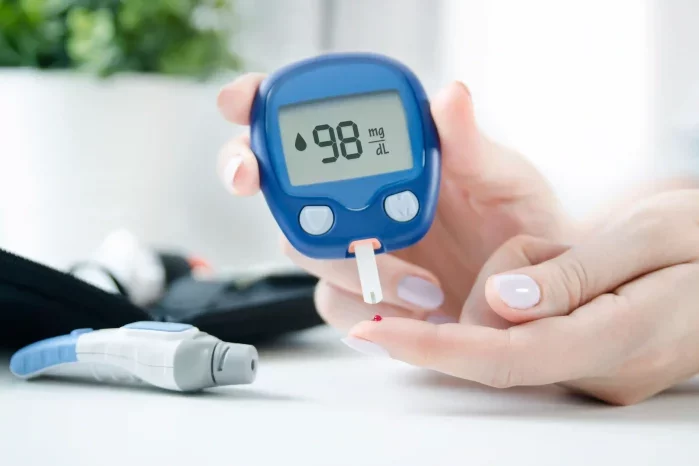Understanding Insulin Resistance and Its Impact on Health
Insulin is a hormone produced by the pancreas that helps regulate blood glucose levels by facilitating the uptake of glucose into cells for energy. When cells become resistant to insulin, the pancreas compensates by producing more insulin. Over time, this can lead to hyperinsulinemia (excess insulin in the blood) and eventually type 2 diabetes if left unmanaged.
Insulin resistance is often associated with other metabolic conditions such as obesity, hypertension, and dyslipidemia, collectively known as metabolic syndrome. Managing insulin resistance involves lifestyle changes, with diet being a cornerstone of this approach.
Principles of a Diet for Insulin Resistance
When planning a diet to manage insulin resistance, the focus should be on foods that help maintain stable blood sugar levels, promote weight loss or maintenance, and improve insulin sensitivity. Here are key dietary principles to consider:
1. Emphasize Low Glycemic Index (GI) Foods
The glycemic index measures how quickly a food raises blood sugar levels. Foods with a low GI cause a slower, more gradual rise in blood glucose, which is beneficial for insulin sensitivity. Examples of low GI foods include:
- Non-starchy vegetables (e.g., leafy greens, broccoli, cauliflower)
- Whole grains (e.g., oats, quinoa, barley)
- Legumes (e.g., lentils, chickpeas, black beans)
- Nuts and seeds
- Most fruits (e.g., berries, apples, pears)
2. Incorporate High-Fiber Foods
Dietary fiber slows down the absorption of glucose and helps maintain stable blood sugar levels. Aim to include both soluble and insoluble fiber in your diet. Sources of high-fiber foods include:
- Whole grains
- Fruits and vegetables
- Legumes
- Nuts and seeds
3. Prioritize Healthy Fats
Healthy fats can improve insulin sensitivity and provide a sense of satiety, helping to control appetite and weight. Include sources of monounsaturated and polyunsaturated fats, such as:
- Avocado
- Nuts and seeds
- Olive oil
- Fatty fish (e.g., salmon, mackerel, sardines)
4. Opt for Lean Protein Sources
Protein is essential for muscle maintenance and overall health. Choose lean protein sources that are low in saturated fat. Good options include:
- Poultry (e.g., chicken, turkey)
- Fish and seafood
- Legumes
- Tofu and tempeh
- Low-fat dairy or dairy alternatives
5. Limit Refined Carbohydrates and Sugars
Refined carbohydrates and added sugars can cause rapid spikes in blood sugar and insulin levels. Minimize intake of:
- Sugary beverages (e.g., soda, fruit juices)
- Sweets and desserts (e.g., candy, pastries)
- Refined grains (e.g., white bread, white rice)
- Processed snacks (e.g., chips, crackers)
6. Stay Hydrated
Proper hydration is essential for overall health and can aid in blood sugar regulation. Aim to drink plenty of water throughout the day and limit sugary drinks.
7. Monitor Portion Sizes
Even healthy foods can contribute to weight gain if consumed in excess. Pay attention to portion sizes to avoid overeating and manage weight effectively.
Meal Planning and Food Choices
Creating balanced meals that adhere to the above principles can help manage insulin resistance. Here are some guidelines for meal planning:
Breakfast
A healthy breakfast sets the tone for the day and helps maintain stable blood sugar levels. Consider options like:
- Oatmeal with Berries and Nuts: Oats are a whole grain with a low GI, and berries add fiber and antioxidants. Nuts provide healthy fats and protein.
- Greek Yogurt with Chia Seeds and Fresh Fruit: Greek yogurt is high in protein, while chia seeds add fiber and omega-3 fatty acids.
- Veggie Omelet with Whole Grain Toast: Eggs provide protein, and adding vegetables like spinach, tomatoes, and bell peppers boosts fiber and nutrients.
Lunch
For lunch, focus on a combination of lean protein, whole grains, and plenty of vegetables. Examples include:
- Quinoa Salad with Chickpeas and Avocado: Quinoa is a high-protein grain, and chickpeas provide additional protein and fiber. Avocado adds healthy fats.
- Grilled Chicken and Vegetable Stir-Fry with Brown Rice: Use a variety of colorful vegetables and a light stir-fry sauce. Brown rice is a whole grain with a low GI.
- Lentil Soup with a Side Salad: Lentils are rich in fiber and protein. Pair with a side salad of mixed greens, cherry tomatoes, and a vinaigrette dressing.
Dinner
Dinner should be balanced and satisfying, with a focus on lean protein, healthy fats, and low-GI carbohydrates. Consider:
- Baked Salmon with Roasted Vegetables: Salmon is a good source of omega-3 fatty acids. Roast a mix of vegetables like Brussels sprouts, carrots, and bell peppers.
- Turkey and Black Bean Chili: This dish is high in protein and fiber. Use lean ground turkey and black beans, and top with avocado and a dollop of Greek yogurt.
- Stuffed Bell Peppers with Quinoa and Vegetables: Bell peppers are low in calories and high in nutrients. Stuff with a mixture of quinoa, vegetables, and lean ground meat or beans.
Snacks
Healthy snacks can help keep blood sugar levels stable between meals. Good options include:
- Apple Slices with Almond Butter: Apples are high in fiber, and almond butter provides healthy fats and protein.
- Carrot Sticks with Hummus: Carrots are low in calories and high in fiber, while hummus adds protein and healthy fats.
- Mixed Nuts and Seeds: A small handful of nuts and seeds can provide a satisfying, nutrient-dense snack.
Specific Foods to Include
Leafy Greens
Leafy greens such as spinach, kale, and Swiss chard are low in calories and carbohydrates but high in fiber and nutrients. They are excellent additions to salads, smoothies, and side dishes.
Berries
Berries like blueberries, strawberries, and raspberries are high in fiber and antioxidants while having a low GI. They can be eaten fresh, added to yogurt or oatmeal, or blended into smoothies.
Fatty Fish
Fatty fish such as salmon, mackerel, and sardines are rich in omega-3 fatty acids, which can improve insulin sensitivity and reduce inflammation. Aim to include fatty fish in your diet at least twice a week.
Whole Grains
Whole grains like oats, quinoa, barley, and brown rice have a lower GI compared to refined grains and provide essential nutrients and fiber. They can be used in a variety of dishes, from breakfast to dinner.
Legumes
Legumes, including beans, lentils, and chickpeas, are high in protein and fiber, making them ideal for managing blood sugar levels. They can be used in soups, stews, salads, and as meat substitutes in various recipes.
Nuts and Seeds
Nuts and seeds are nutrient-dense and provide healthy fats, protein, and fiber. Examples include almonds, walnuts, chia seeds, and flaxseeds. They can be eaten as snacks or added to meals for extra texture and nutrition.
Olive Oil
Olive oil is a source of monounsaturated fats that can improve insulin sensitivity. Use it as a dressing for salads, a base for cooking, or a dip for whole-grain bread.
Avocado
Avocado is high in healthy fats, fiber, and various vitamins and minerals. It can be added to salads, sandwiches, or eaten on its own as a nutritious snack.
Foods to Avoid
Sugary Beverages
Sugary beverages like soda, fruit juices, and energy drinks can cause rapid spikes in blood sugar levels. Opt for water, herbal teas, or beverages with no added sugar.
Processed Snacks
Processed snacks such as chips, crackers, and sugary granola bars often contain refined carbohydrates and added sugars. Choose whole food snacks instead.
Refined Grains
Refined grains like white bread, white rice, and pasta have been stripped of their fiber and nutrients, leading to higher blood sugar spikes. Opt for whole grain alternatives.
Sweets and Desserts
Sweets and desserts such as candy, pastries, and ice cream are high in added sugars and unhealthy fats. Limit these treats and find healthier alternatives.
High-Fat Processed Meats
Processed meats like bacon, sausages, and deli meats are high in unhealthy fats and sodium. Choose lean, unprocessed meats instead.
Lifestyle Factors to Complement Diet
While diet is crucial for managing insulin resistance, other lifestyle factors also play a significant role. Consider the following:
Regular Physical Activity
Exercise helps improve insulin sensitivity and aids in weight management. Aim for at least 150 minutes of moderate-intensity exercise per week, including activities like walking, cycling, swimming, or resistance training.
Weight Management
Maintaining a healthy weight is essential for improving insulin sensitivity. Combining a balanced diet with regular exercise can help achieve and maintain a healthy weight.
Stress Management
Chronic stress can negatively impact insulin sensitivity. Practice stress-reducing techniques such as meditation, deep breathing, yoga, or spending time in nature.
Adequate Sleep
Poor sleep can affect insulin sensitivity and overall health. Aim for 7-9 hours of quality sleep per night.
Regular Monitoring
Work with your healthcare provider to regularly monitor blood sugar levels, insulin levels, and other relevant health markers. This can help track progress and make necessary adjustments to your diet and lifestyle.
See also: What Supplements Should I Take for Insulin Resistance?
Conclusion
Managing insulin resistance requires a multifaceted approach, with diet being a central component. By focusing on low GI foods, high-fiber options, healthy fats, lean proteins, and avoiding refined carbohydrates and sugars, individuals with insulin resistance can improve their insulin sensitivity and overall health. Complementing dietary changes with regular physical activity, weight management, stress reduction, and adequate sleep can further enhance the management of insulin resistance and reduce the risk of developing type 2 diabetes. Always consult with a healthcare provider or a registered dietitian for personalized dietary advice and support.



























